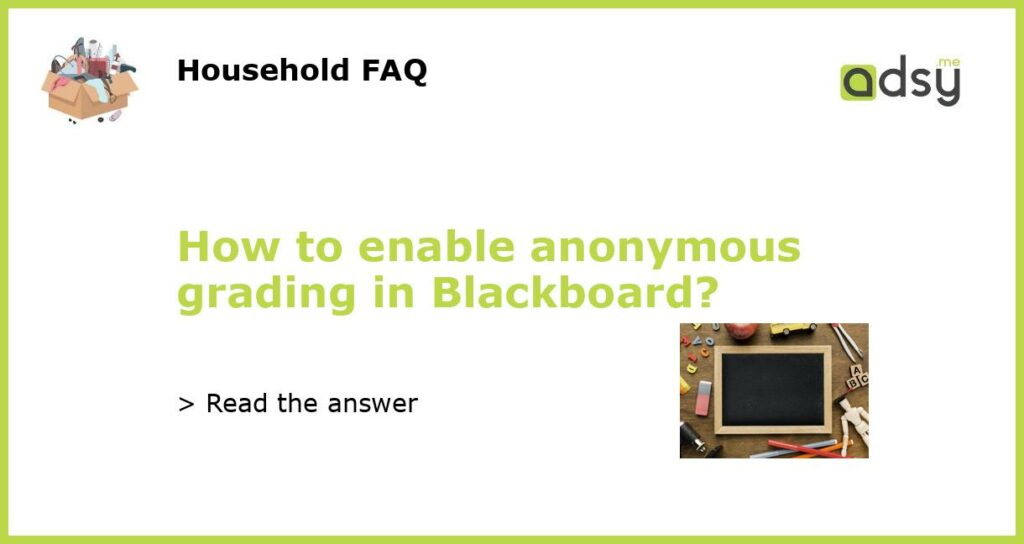Understanding Anonymous Grading in Blackboard
Anonymous grading in Blackboard allows instructors to grade assignments without knowing which student submitted which assignment. This feature can help ensure an unbiased assessment and reduce potential favoritism. Enabling anonymous grading in Blackboard can be done in just a few simple steps.
Step 1: Create an Assignment
To enable anonymous grading, the first step is to create an assignment in Blackboard. Ensure that the assignment is set up for online submission and that the grading option is set to “Anonymous Grading”.
Step 2: Set the Number of Attempts
You can set the number of attempts a student has to submit their assignment. This option is found when creating the assignment. Setting the number of attempts helps ensure that students have a fair chance to submit their best work without worrying about being identified by the instructor.
Step 3: Enable Anonymous Grading
After the assignment has been created and the attempts set, instructors should navigate to the assignment’s options and enable anonymous grading. This option allows instructors to grade student work without seeing the student’s name.
Step 4: Grade the Assignment
After the assignment submission deadline has passed, instructors can begin grading the assignment. When grading anonymously, instructors will see a list of submissions numbered based on the order they were submitted. To maintain anonymity, instructors should avoid assigning feedback or marks that could identify the student.
Enabling anonymous grading in Blackboard can help reduce potential bias and create a fair assessment process. Remember that anonymous grading is not a substitute for creating a rubric or providing constructive feedback to students. Overall, incorporating anonymous grading into your Blackboard workflow can be a valuable tool in ensuring a fair and standardized grading process.





